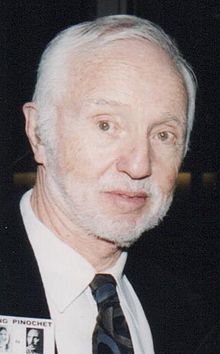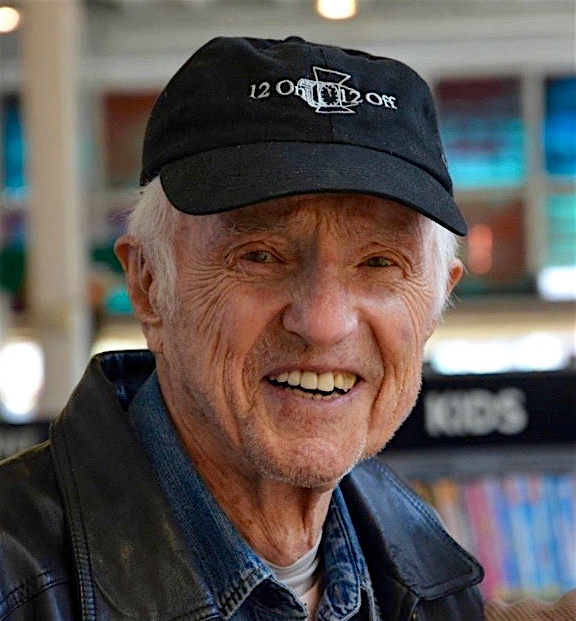Haskell Wexler (Haskell Wexler)

Haskell Wexler was born to a Jewish family in Chicago in 1922. His parents were Simon and Lottie Wexler, whose children included Jerrold, Joyce (Isaacs) and Yale. He attended the progressive Francis Parker School, where he was best friends with Barney Rosset. After a year of college at the University of California, Berkeley and a tour in the United States Merchant Marine during World War II, Wexler decided to become a filmmaker. Based in Chicago, Wexler made many documentaries, including The Living City, which was nominated for an Academy Award. Haskell Wexler briefly made industrial films in Chicago, then in 1947 became an assistant cameraman. Wexler worked on documentary features and shorts; low-budget docu-dramas such as 1959’s The Savage Eye, television’s The Adventures of Ozzie and Harriet and TV commercials (he would later found Wexler-Hall, a television commercial production company, with Conrad Hall). He made ten documentary films with director Saul Landau, including Paul Jacobs and the Nuclear Gang, which aired on PBS and won an Emmy Award and a George Polk Award. Other notable documentaries shot and co-directed (with Landau) by Wexler included Brazil: A Report on Torture and The CIA Case Officer and The Sixth Sun: A Mayan Uprising in Chiapas.
In 1963, Haskell Wexler served as the cinematographer on his first big-budget film, Elia Kazan’s America, America. Kazan was nominated for a Best Director Academy Award. Wexler worked steadily in Hollywood thereafter. Wexler was cinematographer of Mike Nichols’ screen version of Who’s Afraid of Virginia Woolf? (1966), for which he won the last Academy Award for Best Cinematography (Black & White) handed out. The following year had Wexler as the cinematographer for the Oscar-winning detective drama, In the Heat of the Night (1967), starring Sidney Poitier. His work was notable for being the first major film in Hollywood history to be shot in color with proper consideration for a person of African descent. Wexler recognized that standard lighting tended to produce too much glare on that kind of dark complexion and rendered the features indistinct. Accordingly, Wexler toned it down to feature Poitier with better photographic results. Haskell Wexler was fired as cinematographer for Milos Forman’s 1975 film One Flew Over the Cuckoo’s Nest and replaced by Bill Butler. Wexler believed his dismissal was due to his concurrent work on the documentary Underground, in which the radical terrorist group The Weather Underground were being interviewed while hiding from the law. However, Forman said he had terminated Wexler over mere artistic differences. Both Wexler and Butler received Academy Award nominations for Best Cinematography for One Flew Over the Cuckoo’s Nest, though Wexler said there was “only about a minute or two minutes in that film I didn’t shoot.”
However, he won a second Oscar for Bound for Glory (1976), a biography of Woody Guthrie, whom Wexler had met during his time in the Merchant Marine. Bound for Glory was the first feature film to make use of the newly invented Steadicam, in a famous sequence that also incorporated a crane shot. Wexler was also credited as additional cinematographer on Days of Heaven (1978), which won a Best Cinematography Oscar for Nestor Almendros. Wexler was featured on the soundtrack of the film Underground (1976), recorded on Folkways Records in 1976. He worked on documentaries throughout his career. The documentary Paul Jacobs and the Nuclear Gang (1980) earned an Emmy Award; Interviews with My Lai Veterans (1970) won an Academy Award. His later documentaries included; Bus Riders’ Union (2000), about the modernization and expansion of bus services in Los Angeles by the organization and its founder Eric Mann, Who Needs Sleep (2006) the Independent Lens documentary Good Kurds, Bad Kurds: No Friends But the Mountains (2000), Tell Them Who You Are (2004) and Bringing King to China (2011). Haskell Wexler also directed fictional movies. Medium Cool (1969), a film written by Wexler and shot in a cinéma vérité style, is studied by film students all over the world for its breakthrough form. It influenced more than a generation of filmmakers. The making of Medium Cool was the subject of a BBC documentary, Look Out Haskell, It’s Real: The Making of Medium Cool (2001).
Produced by Lucasfilm, Haskell Wexler’s film Latino (1985) was chosen for the 1985 Cannes Film Festival. He both wrote and directed the work. Another directing project was From Wharf Rats to Lords of the Docks (2007), an intimate exploration of the life and times of Harry Bridges, an extraordinary labor leader and social visionary described as “a hero or the devil incarnate, it all depends on your point of view.” In 1988, Wexler won the Independent Spirit Award for Best Cinematography for the John Sayles film Matewan (1987), for which he was also nominated for an Academy Award. His work with Billy Crystal in the HBO film 61* (2001) was nominated for an Emmy. Haskell Wexler died in his sleep at the age of 93 on December 27, 2015 at his home in Santa Monica, California.
Born
- February, 06, 1922
- USA
- Chicago, Illinois
Died
- December, 27, 2015
- USA
- Santa Monica, California



